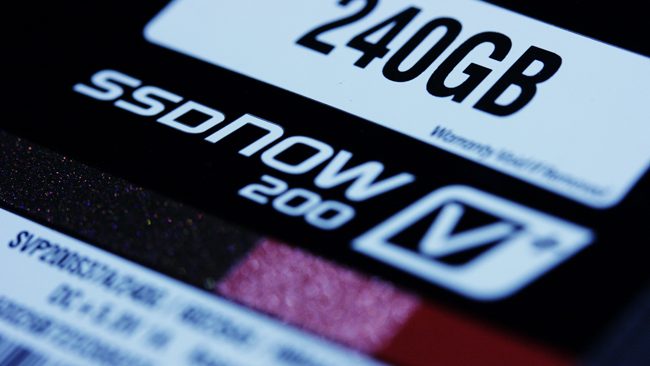
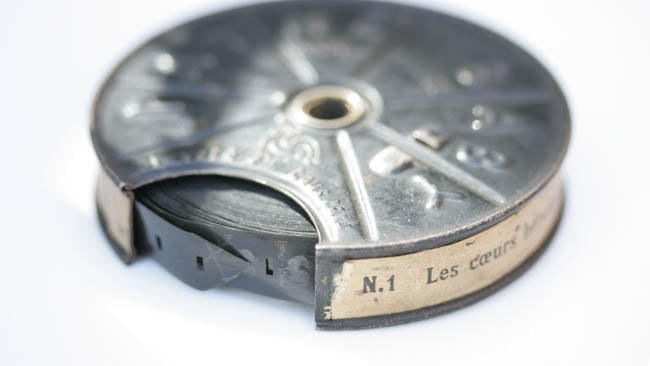 This Pathe Baby 9.5mm film has survived many decades.
This Pathe Baby 9.5mm film has survived many decades.
Phil Rhodes looks at the limitations of film stock for archival storage and options, present and future, that may extend the lifespan of your media in long-term storage.
We currently enjoy access to the best part of a century's history in filmmaking. There's growing concern, though, that modern productions may not last nearly as long, perhaps most chiefly because people don't want to put the effort into storing them properly. This is something that's been true for decades, but which was brought up recently by the president of the Producer's Guild of America, Lory McCreary, at a recent conference.
The trouble with film
McCreary was actually talking about HDR and 4K finishing, and is probably more interested in the ability to re-sell the same production two or three years down the road, as opposed watching it in a hundred years' time. Photochemical film actually doesn't keep particularly well, unless it's maintained in carefully temperature-and humidity-controlled conditions. Bear in mind that the original processing on most camera negative is done overnight, beginning the day it was shot. I mean no slight on the work done by the labs, who perform advanced feats of chemistry every day and often have a full-time chemist on staff whose job it is to maintain repeatability, but it was never designed to be an archival process.
The dyes used in film stock were not chosen for their long-term storage characteristics. They were chosen because the chemistry that manufactures them during film processing could practically be deployed a working tool. They can and sometimes do fade terribly, especially if the original processing was not done with real care (it generally is). The ideal solution is to make separate black-and-white records representing the primary colours of the original image. Monochrome film keeps a lot better, because the black areas aren't dye, they're microscopic metallic silver particles suspended in gelatin. Gelatin is a product that can absolutely shrink and decay, but the dye can't fade. Nonetheless, few productions had black-and-white separations made, and if not, or if they haven't been stored properly, there's we can expect serious problems recovering them to a reasonable standard.
LTO to the rescue?
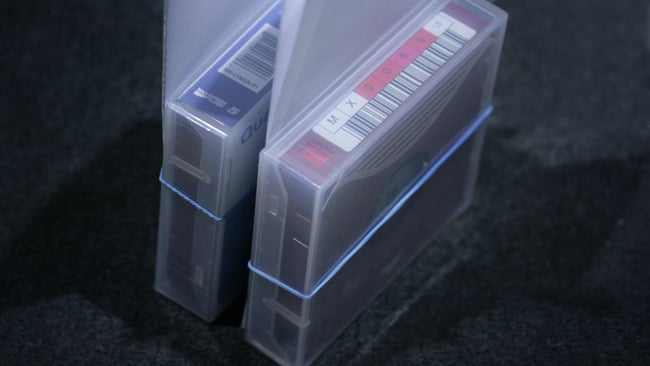 LTO is used because it's the only option. Ideally, we'd avoid potentially-fragile magnetic tape altogether.
LTO is used because it's the only option. Ideally, we'd avoid potentially-fragile magnetic tape altogether.
Still, film can, in the right circumstances, last decades. Conversely, much is made of the need to move data from one place to another as hard disks age or tape formats become obsolete, although the LTO program has done what it can to help. The tapes are intended to last decades and the drives are backward-compatible to read tapes written by drives two generations earlier. The longevity is a claim which, to point out the obvious, is impossible to test in circumstances where LTO tapes have not yet existed for decades. A lot of people are relying on the fact that it is true, that the stuff will last. The scandal, if it turned out not to be so, would certainly be far-reaching.
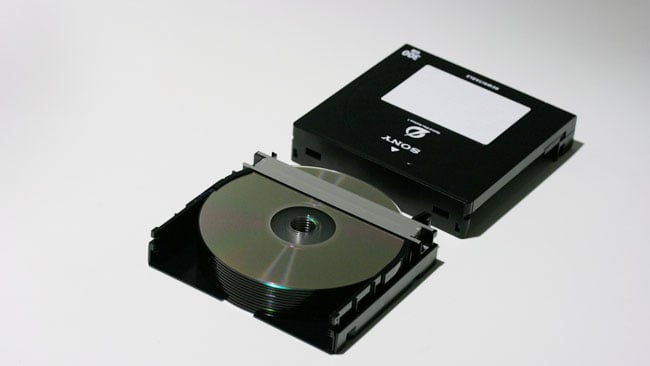 Optical disc formats such as Sony's ODA may have better archival longevity than tape,
Optical disc formats such as Sony's ODA may have better archival longevity than tape,
although size and performance needs to improve.
There will invariably be a need to migrate data eventually, though it's much less of a concern than is implied by the two-year migration window for running hard disks. This is often erroneously used in reference to all digital backup strategies. With the backward-compatibility of drives, there's still LTO drives in manufacture right now – fifteen years after the development of the format – which will read the earliest tapes. Yes, migration is necessary to some extent, and film, for whatever it's worth, is easier to decode at a glance, but the picture is not as bleak as it's often painted. Film is lossy; digital is not, and it's at least theoretically possible for digital originals to be kept absolutely identically for any period of time. This is not really possible for film, which will, in extremis, starts to decay eventually. Digital originals are intrinsically much more archivable than film, even if we're not actually making the best of that situation at the moment. Even in the short term, the standards of reliability to which modern digital acquisition is held are way beyond anything 35mm film could achieve.
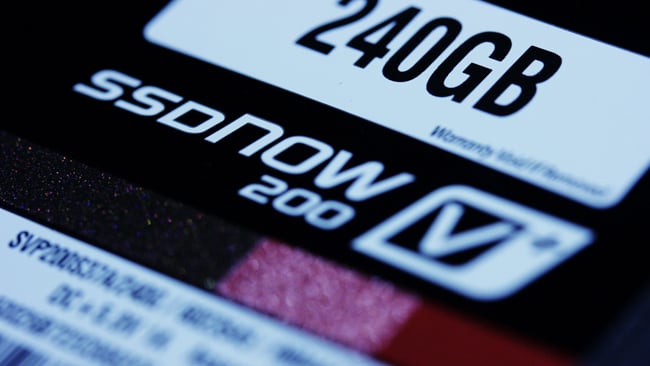 Although NAND flash is not an archival format in any sense, digital acquisition makes lossless archiving at least possible.
Although NAND flash is not an archival format in any sense, digital acquisition makes lossless archiving at least possible.
Perhaps the most enlightening thing about film as an archival medium, though, is the realisation that it was never actually intended to be one. It wasn't picked because the people who picked it wanted something that would last a century. It was simply the only technology available. The longevity – assuming, again, proper conditions – was blind luck. And much as early video material such as the terribly compressed HDCAM masters of The Phantom Menace are likely to look rather pale and insignificant in comparison to later, better-recorded material, early film has many of the same problems. The processes hadn't been optimised; the storage regimen hadn't been properly established. While some early material has survived well, a good proportion of the very earliest stuff – say pre-1930 – is hardly an advertisement for pristine archival longevity. And the situation is much the same now.
Future of future-proofing...
LTO absolutely was developed for its archival properties, but it's not as if there's a choice involved; it's used because there is no reasonable alternative. In many ways, that's actually quite surprising, given the long legacy of magnetic recording tape as a technology. It's been replaced in more-or-less every other circumstance. Nobody will be entirely surprised when something else comes along, something such as the five-dimensional (count 'em!) glass-based storage recently discussed by a team at the University of Southampton, under Prof. Peter Kazansky. The technique involves firing lasers with a very high peak intensity (though comparatively low average intensity) into conventional glass, creating microscopic regions with variable optical properties. As a piece of (largely) solid glass, the results are expected to have extremely good archival properties and a density that's workable for film and TV applications. Expect it in a few years, if it arrives at all.
The sad fact is, though, that it still won't be able to store film without loss, and producers who want to maintain the availability of their work for future generations will have to put cold, hard cash into ensuring that's the case. Future-proofing is easy if it means re-selling the show on a video-on-demand service in a couple of years. It's harder if we're considering the next human lifespan.
Tags: Technology


Comments